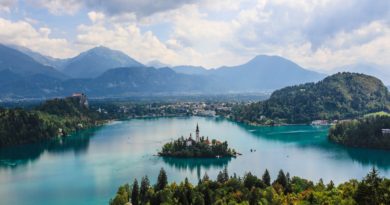Eating Sweets Is Healthy? For Greenlanders, Yes!

Greenlanders are lucky. Not only do they live in an intoxicatingly beautiful landscape, but they also have a dietary advantage that the rest of us don’t possess. ©Nat Wilson, flickr
Was one of your 2022 New Year’s resolutions to take better care of yourself? Did you, perhaps, promise in this COVID-19 era that you’d exercise more and eat healthfully? Does your ongoing grocery list now include items such as apples, avocados, blueberries, broccoli, carrots, kale and lentils?
Have you been down this path before?
After indulgent, end-of-the-year holidays, it’s natural to feel like a change is in order. Year after year, you probably make the same resolution to adopt healthy eating habits. It’s also common to abandon January’s resolutions by February. In fact, roughly 80 percent of New Year’s resolutions fail by the second month of the year.
But, oh, those lucky Greenlanders. If you happen to be one, you may just want to keep the sweet treats coming—and maintain your health to boot.

Imagine being a Greenlander and swapping out broccoli for cookies and other sweets—all while achieving the same health benefits!
Sweet treats and six-pack abs
Greenland is home to immense glaciers, vast tundras, rugged coastlines deeply indented by iceberg-filled fjords, and layers upon layers of culture and history.
As if living in such an enchanting landscape isn’t sweet enough, according to a new study conducted by scientists from the University of Copenhagen, the University of Southern Denmark, and several research institutions and public agencies in Greenland, a genetic variation among some Greenlanders makes eating sugar healthy—and significantly more so than for most people. Data from 6,551 adult Greenlanders (and from some experiments using mice) showed that gut bacteria and a unique diet that has nourished Greenlanders for millennia have provided them with a genetic variation that offers an incredible advantage. Two copies of a gene variant make it so that they absorb sugar differently than other people do.
The new research shows that adult Greenlanders with the genetic variation have lower BMIs (body mass indexes), cholesterol levels, fat percentages and weights, and that they are generally significantly healthier. They have less belly fat and—say the researchers—might find it easier to get six-pack abdominals. That’s because carriers of the genetic variation do not absorb ordinary sugar in their bloodstreams the way people without the genetic variation do. Instead, sugar heads directly into their intestines. There, gut bacteria convert the sugar into a short-chain, fatty acid called acetate, which in previous studies has been shown to reduce appetite, increase metabolism and boost the immune system.

In Greenland, fruits and vegetables are hard to come by. A traditional plate here would have some fatty marine animal—such as seal or whale—or fish, and not much else.
Singular diets and helpful drugs
It’s thought that the reason for this widespread genetic variation among Greenlanders is due to a diet that has stood out from that of the rest of the world for thousands of years. For the most part, Greenlanders have eaten meat and fat from fish, reindeer, seals and whales. Their diets have traditionally had minimal sugar content. That has made the genetic variation frequent, as there has never been a need to absorb sugar rapidly in the bloodstream.
There is one caveat, though. While the variation has clear health benefits for adult Greenlanders, it can be problematic for their children.
Younger carriers of the genetic variation experience negative consequences due to their different types of sugar absorption. For them, consuming sugar causes abdominal pain, bloating and diarrhea. As they age, their gut bacteria gradually get used to sugar and learn how to convert it into energy.

Another source of protein for Greenlanders is reindeer. Osso buco (a shank cut into portions), soups and steaks are made from reindeer hunted on Greenland’s east coast. ©Greenland Travel, flickr
Because the genetic variation provides a better balance of fat in the bloodstream—which results in lower weight and, consequently, fewer cardiovascular diseases—the researchers hope that they can use the results of this study to lay the groundwork for developing new drugs that might one day be used to treat cardiovascular disease and obesity in those who reside in the rest of the world.
Home landscapes and eating identities
After reading this research and thinking about that on Tibetans (whose genes allow them to easily acclimate to heights), I conclude that it’s not only what we eat that makes us who we are, but the places where we come from. It seems we do have innate connections to our native grounds.
Following the overeating I did this holiday season, I’m not looking forward to the remedial work that I’ll have to do. Perhaps, a resolution is in order.
All I can say is, at times like these, I wish I were a Greenlander.
Or, at least, in Greenland again.
Here’s to finding your true places and natural habitats,
Candy
About the author: Candice Gaukel Andrews View all posts by Candice Gaukel Andrews
A multiple award-winning author and writer specializing in nature-travel topics and environmental issues, Candice has traveled around the world, from the Arctic Circle to Antarctica, and from New Zealand to Scotland’s far northern, remote regions. Her assignments have been equally diverse, from covering Alaska’s Yukon Quest dogsled race to writing a history of the Galapagos Islands to describing and photographing the national snow-sculpting competition in her home state of Wisconsin.
In addition to being a five-time book author, Candice’s work has also appeared in several national and international publications, such as “The Huffington Post” and “Outside Magazine Online.” To read her web columns and see samples of her nature photography, visit her website at www.candiceandrews.com and like her Nature Traveler Facebook page at www.facebook.com/naturetraveler.




